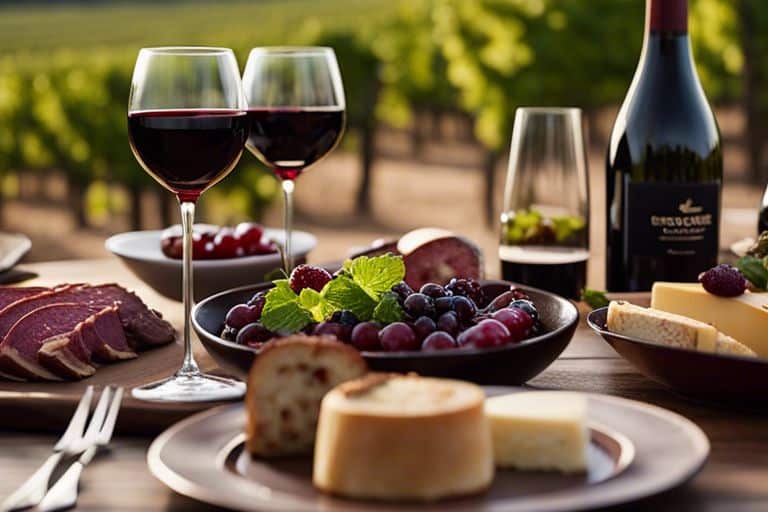
Indulge in a sensory journey as we examine into the world of Cabernet Sauvignon, a noble grape variety renowned for producing some of the most exquisite and full-bodied red wines. Originating from the Bordeaux region of France, Cabernet Sauvignon is now cultivated in vineyards worldwide, each terroir adding its unique touch to the wine. Join us as we uncover the signature notes of blackcurrant, plum, mint, and cedar that define this iconic varietal, along with hints of herbs, spices, and oak. Discover the perfect food pairings and optimal serving temperatures to fully appreciate the complex layers and bold flavours of Cabernet Sauvignon. Whether you are a seasoned wine enthusiast or a curious novice, this exploration will deepen your appreciation for the rich and robust characteristics of this classic grape.
The Characteristics of Cabernet Sauvignon
Aromas and Flavor Profiles
Cabernet Sauvignon is known for its complex aromas and flavour profiles, which often include blackcurrant, black cherry, cedar, and bell pepper. These wines can also exhibit notes of tobacco, leather, and sometimes vanilla, depending on the ageing process and oak influence. The combination of fruit, herbaceous, and savoury tones makes Cabernet Sauvignon a versatile and intriguing wine to explore.
Tannins and Texture
Cabernet Sauvignon is renowned for its bold tannins and full-bodied texture. The high tannin levels in this grape variety contribute to its ageing potential and structure, making it a great choice for cellaring. When young, Cabernet Sauvignon can be quite astringent, but with time, these tannins soften, leading to a smoother and more balanced wine on the palate. The texture of Cabernet Sauvignon is often described as grippy, velvety, and sometimes chewy, adding to the overall complexity of the wine.
The Global Footprint of Cabernet Sauvignon
Old World Wines – Tradition and Terroir
Old World regions such as Bordeaux, France, and Tuscany, Italy, have long been celebrated for their Cabernet Sauvignon wines that embody tradition and showcase the unique influence of terroir on the grape. These wines often exhibit characteristics of earthiness, structure, and complexity, reflecting the centuries-old winemaking practices and distinct growing conditions of their respective regions.
New World Wines – Innovation and Style
New World regions like California, Australia, and Chile have brought a fresh perspective to Cabernet Sauvignon winemaking, focusing on innovation and expressive style. These wines are known for their ripe fruit flavours, bold tannins, and approachable profiles that appeal to modern wine enthusiasts. By embracing modern techniques and pushing boundaries, winemakers in these regions have redefined the possibilities for Cabernet Sauvignon.
Food Pairing and Serving Suggestions
Classic Pairings with Cabernet Sauvignon
When considering classic pairings with Cabernet Sauvignon, think of rich and bold flavours. This full-bodied red wine complements red meat dishes such as steak, lamb, and beef stew. Additionally, aged cheeses like Cheddar and blue cheese create a perfect harmony with the tannins in Cabernet Sauvignon.
Creative Combos and Modern Pairings
For those looking to step outside the traditional pairings, there are plenty of creative and modern options to explore with Cabernet Sauvignon. Try pairing this wine with dark chocolate for a decadent treat or with spicy dishes like a rich chilli con carne. Seafood lovers can also experiment by pairing Cabernet Sauvignon with grilled salmon or tuna steaks.
When considering modern pairings, the key is to balance the boldness of Cabernet Sauvignon with complementary flavours that enhance the overall dining experience. Don’t be afraid to think outside the box and try new combinations to discover your own favourite pairings with this versatile wine.
Vintages and Variations
Understanding the Impact of Vintage Variation
When considering Cabernet Sauvignon, the vintage can significantly impact the taste and quality of the wine. Factors such as weather conditions during the growing season, harvesting time, and winemaking techniques all play a role in shaping the flavours and aromas of the final product. Wine enthusiasts often enjoy exploring different vintages to experience the unique characteristics that each year brings.
Comparing Single Varietal vs. Blend
One of the key decisions winemakers face when producing Cabernet Sauvignon is whether to create a single varietal wine or a blend. While single varietal wines showcase the pure expression of Cabernet Sauvignon, blends can offer complexity and depth by combining different grape varieties. Both styles have their own merits, and it ultimately comes down to the winemaker’s vision and the desired flavour profile.
Single Varietal
| Pros: | Shows pure expression of Cabernet Sauvignon |
| Cons: | May lack complexity compared to blends |
Blend
| Pros: | Offers complexity and depth |
| Cons: | Can mask pure Cabernet Sauvignon characteristics |
Exploring The Rich Flavours Of Cabernet Sauvignon
As we investigated into the world of Cabernet Sauvignon, we uncovered a tapestry of rich flavours that captivate the senses. From the bold blackcurrant notes to the subtle hints of bell pepper and tobacco, each sip tells a story of the grape’s complexity and character. The firm tannins provide structure and ageing potential, allowing these wines to evolve beautifully over time. Whether enjoyed young or aged, Cabernet Sauvignon offers a luxurious experience that showcases the best of what the grape has to offer. Its versatility in food pairings, from hearty stews to elegant roasts, further cements its status as a perennial favourite among wine enthusiasts. Exploring the rich flavours of Cabernet Sauvignon is a journey worth commenceing on for anyone looking to appreciate the sophistication and depth of this iconic grape variety.